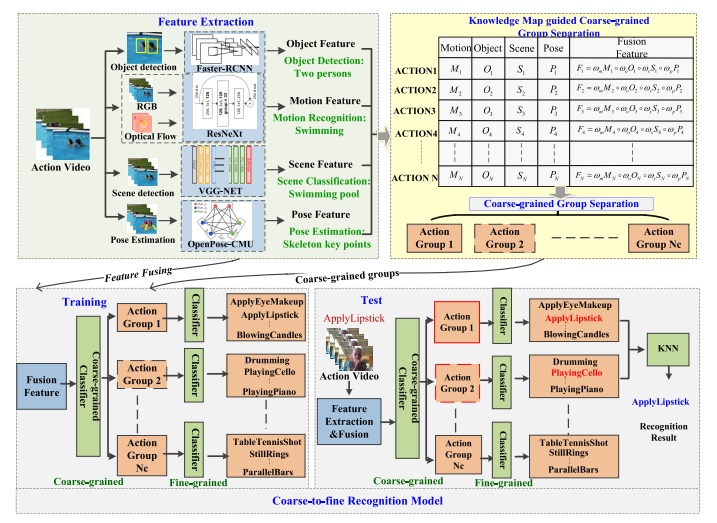- ALL COMPUTER, ELECTRONICS AND MECHANICAL COURSES AVAILABLE…. PROJECT GUIDANCE SINCE 2004. FOR FURTHER DETAILS CALL 9443117328


Projects > ELECTRONICS > 2020 > IEEE > DIGITAL IMAGE PROCESSING
Human actions involve a wide variety and a large number of categories, which leads to a big challenge in action recognition. However, according to similarities on human body poses, scenes, interactive objects, human actions can be grouped into some semantic groups, i.e. sports, cooking, etc. Therefore, in this paper, we propose a novel approach which recognizes human actions from coarse to fine. Taking full advantage of contributions from high-level semantic contexts, a context knowledge map guided recognition method is designed to realize the coarseto-fine procedure. In the approach, we define semantic contexts with interactive objects, scenes and body motions in action videos, and build a context knowledge map to automatically define coarse-grained groups. Then fine-grained classifiers are proposed to realize accurate action recognition. The coarse-tofine procedure narrows action categories in target classifiers, so it is beneficial to improving recognition performance. We evaluate the proposed approach on the CCV, the HMDB-51, and the UCF101 database.
Recurrent neural networks (RNNs) and Long Short-Term Memory (LSTM)
In this paper, we propose a context knowledge map guided coarse-to-fine action recognition approach. In human action recognition, motion feature is no doubt the major feature. Context information, i.e. interactive objects, scenes, also provides additional supports to determine fine-grained action categories. We use context information to build a context knowledge map for action representation, and perform coarse-to-fine action recognition.
BLOCK DIAGRAM
